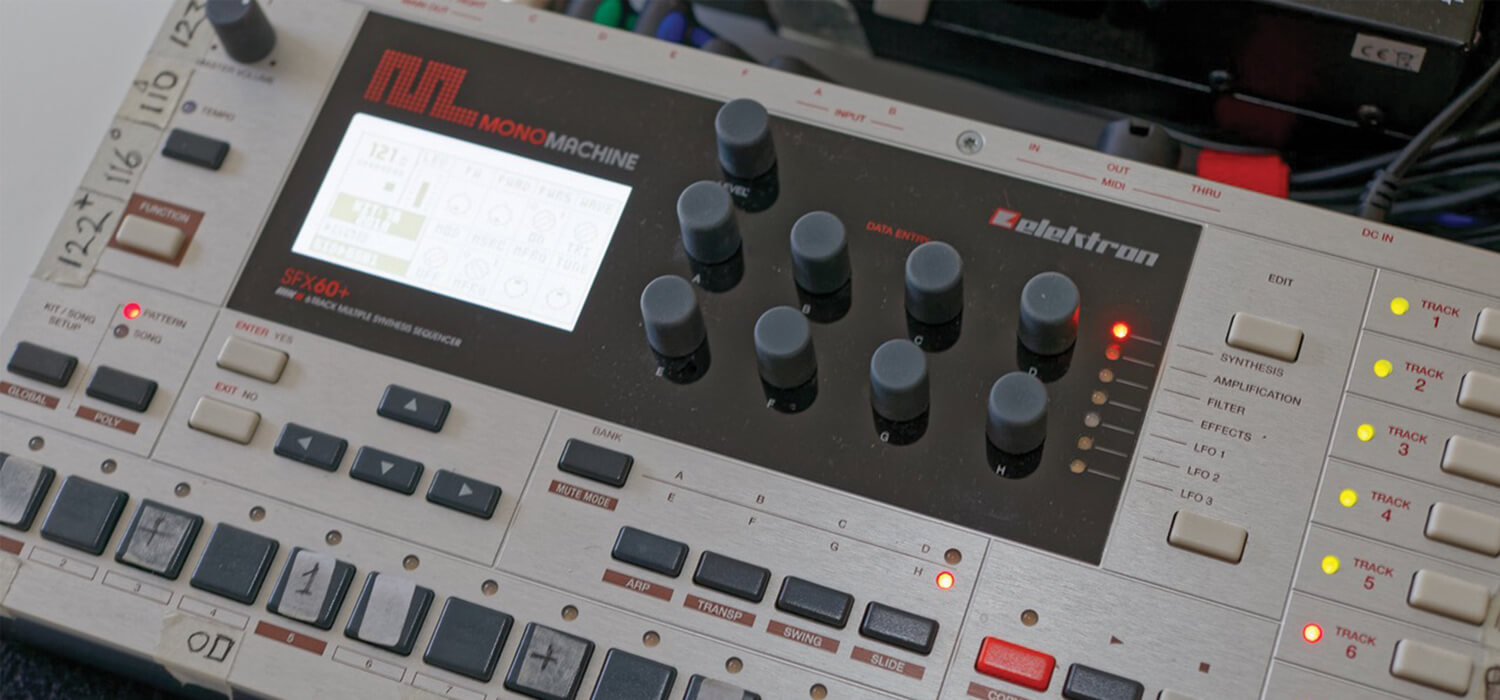Vintage Rewind: Elektron Monomachine – Love At First Sight
Martin Delaney goes all misty-eyed over his love affair with the Elektron Monomachine. Is it just nostalgia? Nope, he’s still using it…

I don’t have any emotional attachment to keyboard-based synths; I don’t play keys, and they look pretty foolish high up on a wall where nobody can play them, acting as glorified sound modules and dust-traps. On the other hand, I love me some groovebox – self-contained devices that provide beats, sequenced patterns, and melodies, with onboard sounds; just add headphones and you’re ready to jam.
In 2004, Elektron released their own take on this concept – the Monomachine. For me it was love at first sight, but at the time I was preoccupied with software, and years passed before I obtained a Monomachine SFX-60+ MKII – the final iteration. The Monomachine has plenty of interface for a small-ish box, with a monochrome display, 10 encoders, 16 ‘keys’, and assorted buttons and LEDs.
It has a headphone port, six outputs, and two inputs, all on 1/4” jacks, along with full-size MIDI In/Out/Thru. There are six sequencer tracks, each hosting a synthesizer or effect, and six further tracks to sequence external MIDI equipment (or bypass the internal sounds and use the Monomachine as a 12-track sequencer). Pattern lengths range from 2-64 steps, but all tracks are locked to the same length. The synths are monophonic (though there’s a Poly mode which uses all tracks at once), and adding an effect like reverb or compression will take another track, and if you want to process incoming audio, that’s another gone!
Speak up
Being equipped with synths such as Superwave, SID, Digipro, and FM+, and a 12-bit drum kit, the Monomachine will never sound ‘analog’. This attitude’s reinforced by the VO synth – voice modelling for your favourite dated retro speech synthesis needs!
These synths are versatile though, there are a lot of tones here, just don’t expect ‘warm’ to be one of them. There’s an Effects page for each synth, featuring delay, parametric EQ, and sample rate reduction, and there are other effects, such as reverb, that load into dedicated tracks, so signals from other tracks, or outside sources, can pass through them.
Naturally there’s a filter and EQ on every track as well, both of which become important elements of the sound design and performance processes. An Amplification page provides amp envelope, distortion, volume, pan, and portamento, but more exciting are the three LFO pages available for each track.
These can be routed to pretty much any parameter in the track, and they’re a big part of the MM’s rhythmic life… as are the Arpeggiators, also available on every track. But we haven’t even talked about sequencing yet, and this is supposed to be a groovebox! Patterns are created by recording from external MIDI sources, or by entering in grid or live recording modes.
There are 8 x 16 patterns available at any time, and tons of onboard storage if you’re using the later models with the +Drive installed. Patterns can be chained, or structured into songs, and these structures can be dynamically re-organised during performance.
Fluid sequencing
Taken at face value the sequences are quite blocky, but there are the LFOs, the Arpeggiators, a Swing control, and the Monomachine’s killer sequencing feature – parameter locks. It’s possible to fix any combination of control settings per step, and even to slide between locked values at different points – suddenly sequencing gets a lot more fluid. Completed combinations of instruments and effects are saved collectively as a ‘kit’, and associated with the relevant patterns.
The Monomachine is sadly discontinued (Elektron’s closest offering is currently the Digitone). It’s not for everybody, but I’m using it more than ever as the hub of my live performances. It’s limited, but so what? It’s not about the features, it’s about the usability. This is my favourite instrument.
Click here for more gear nostalgia in our vintage archives